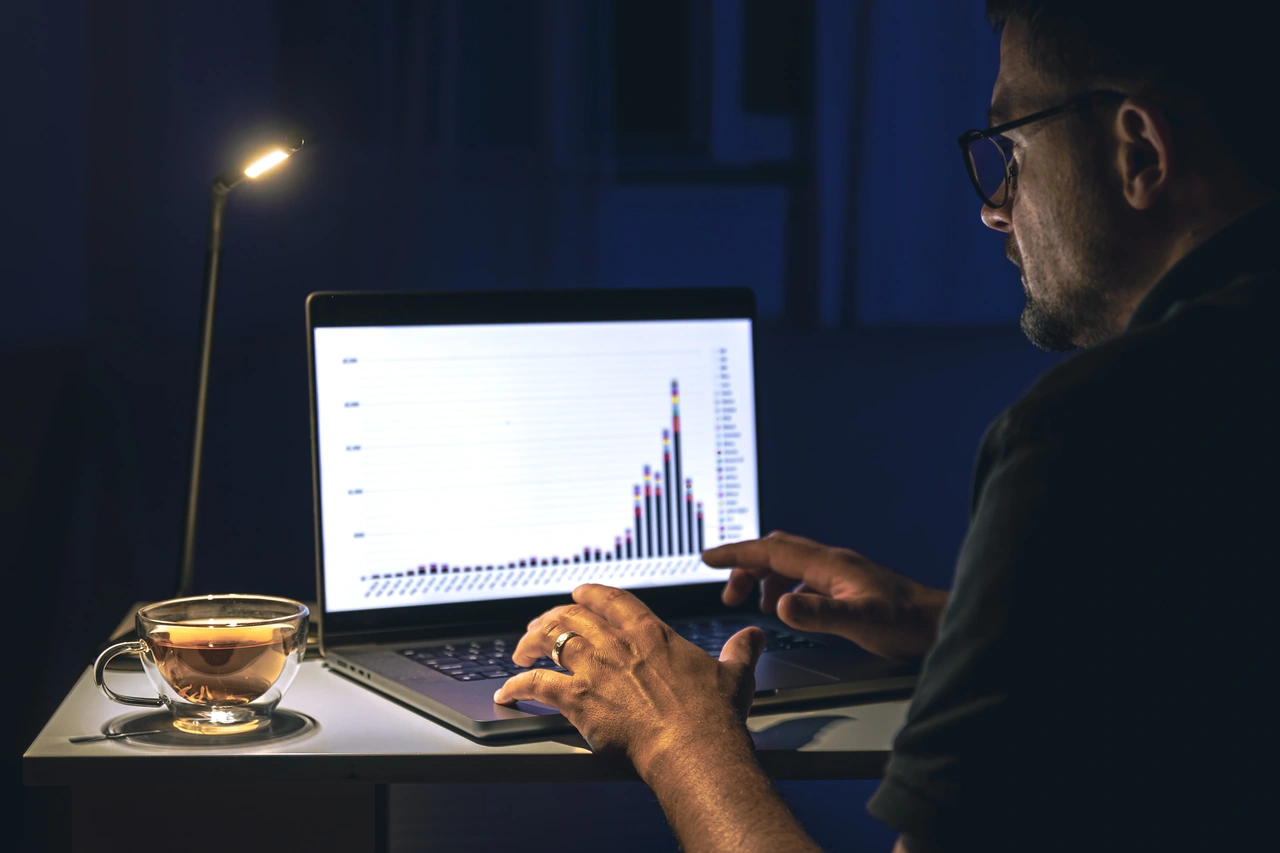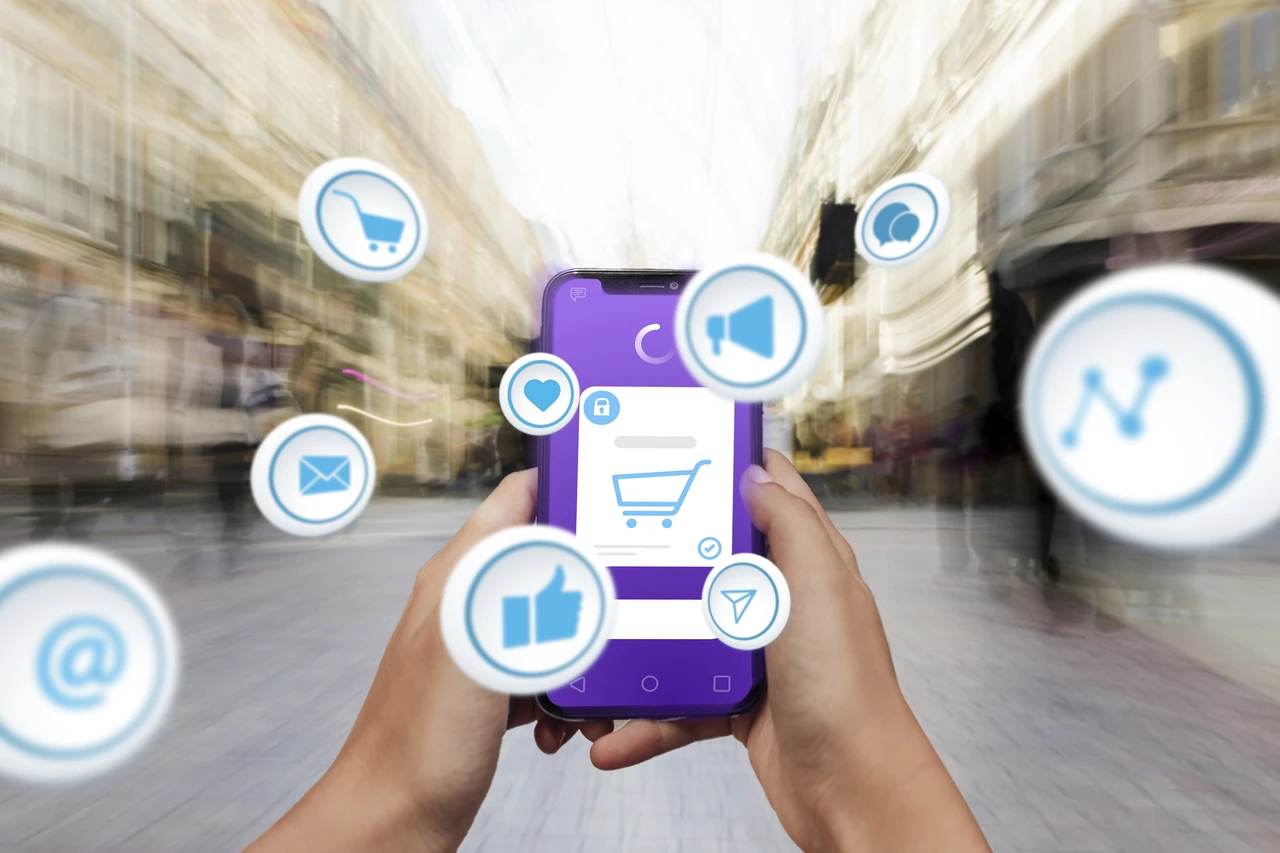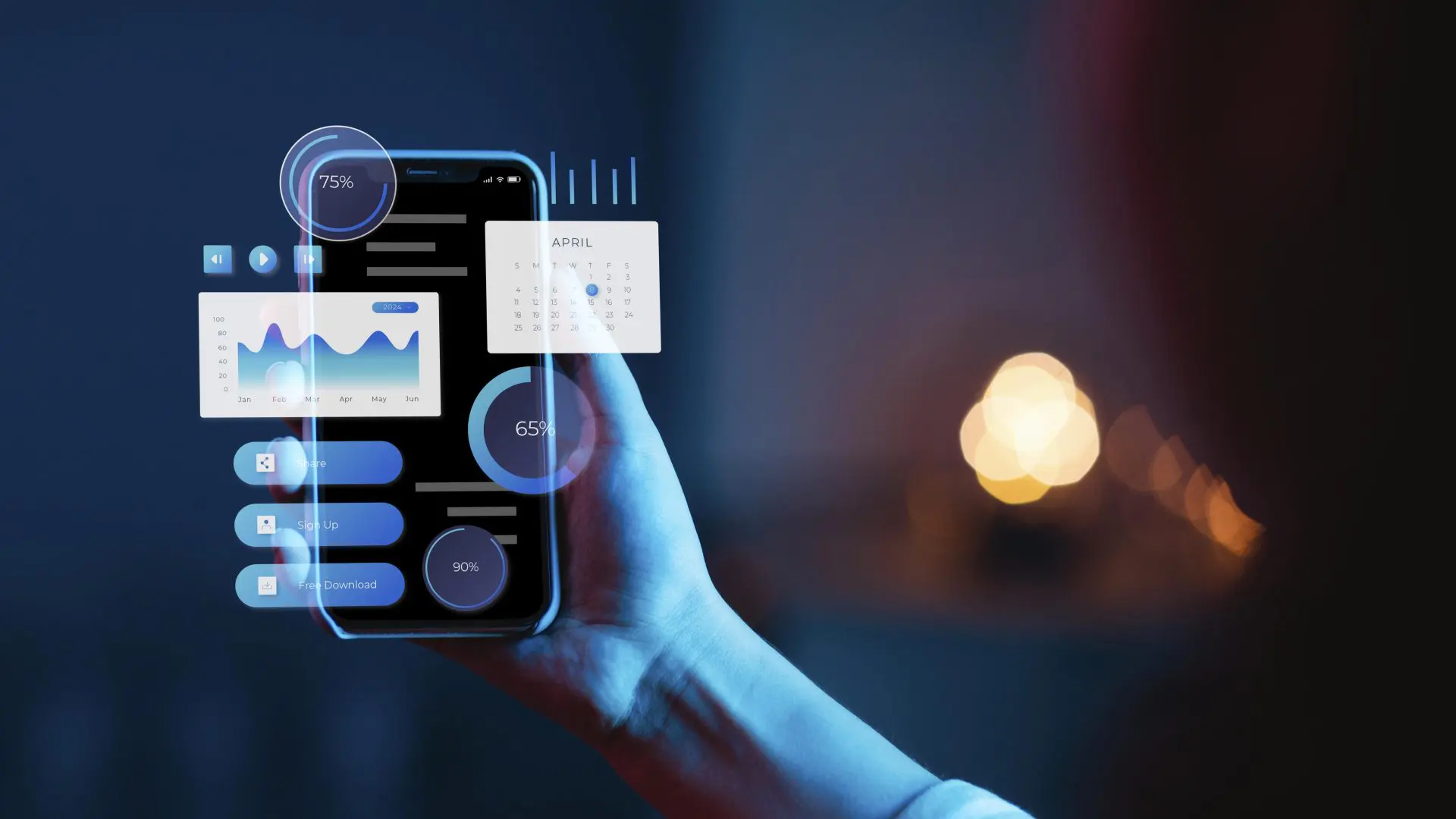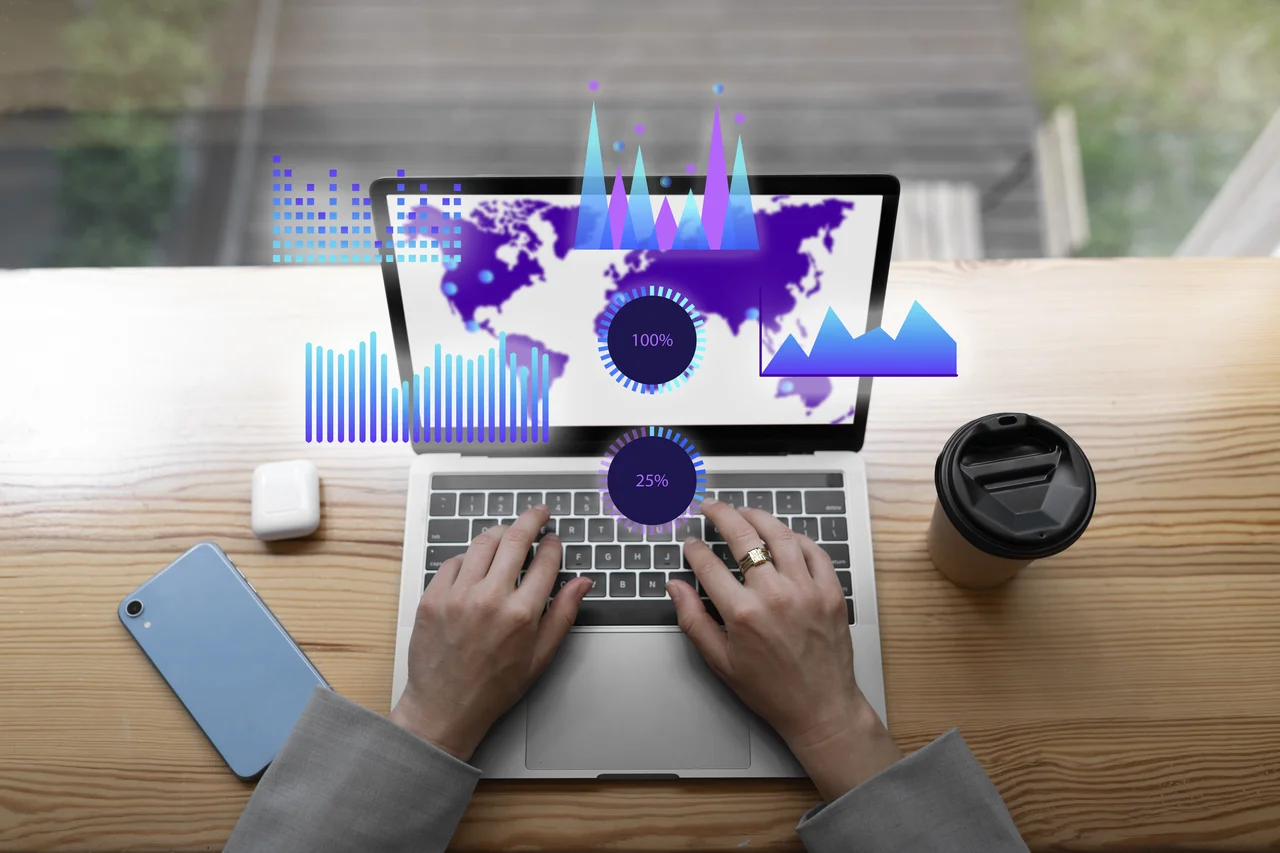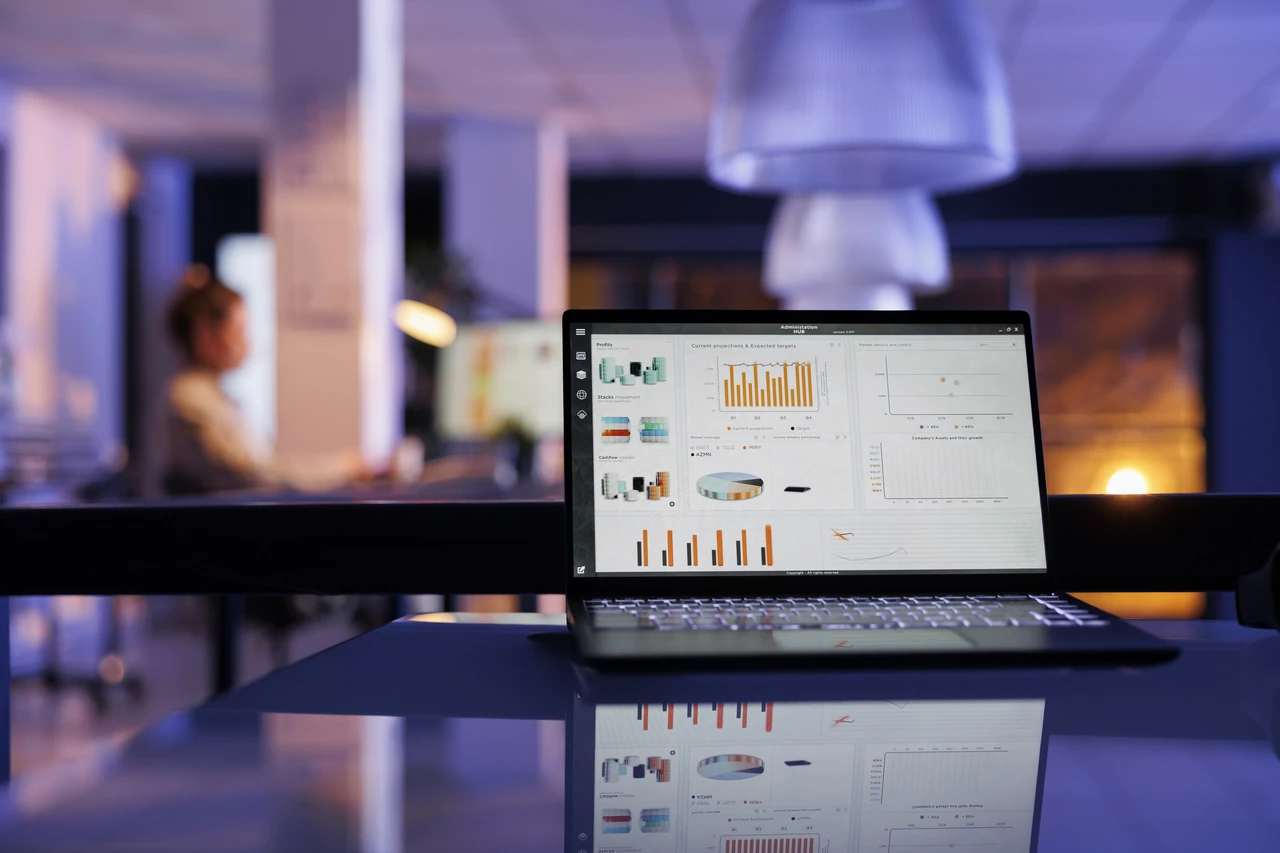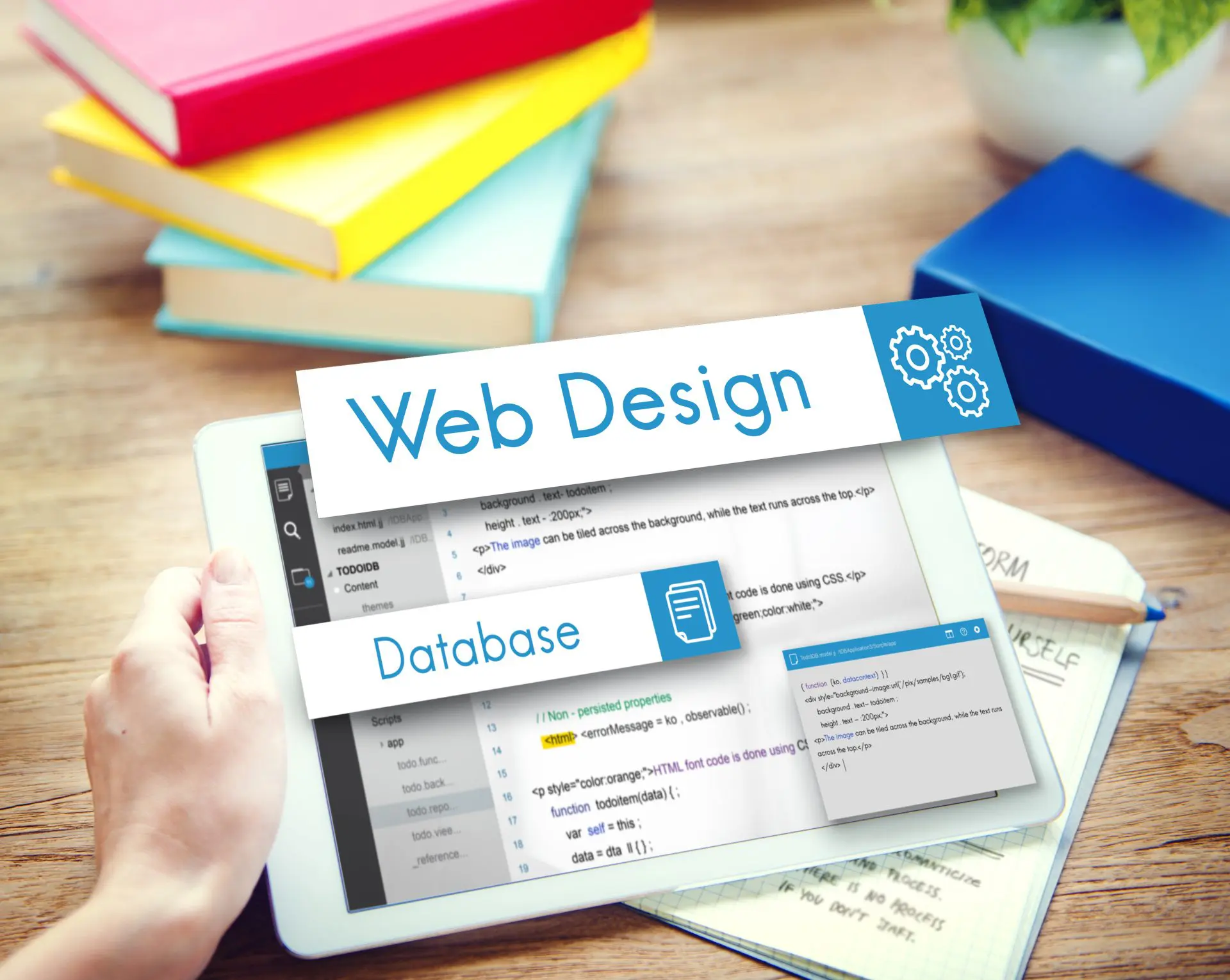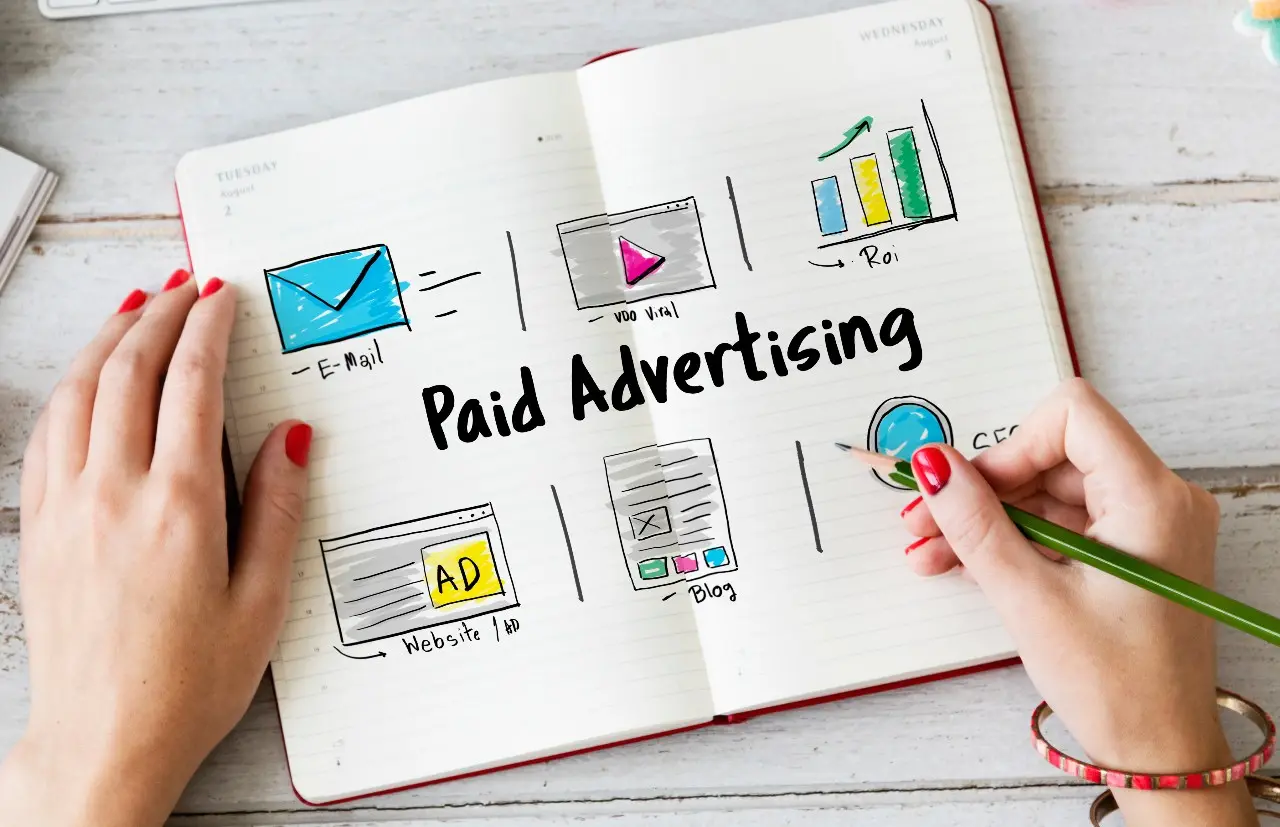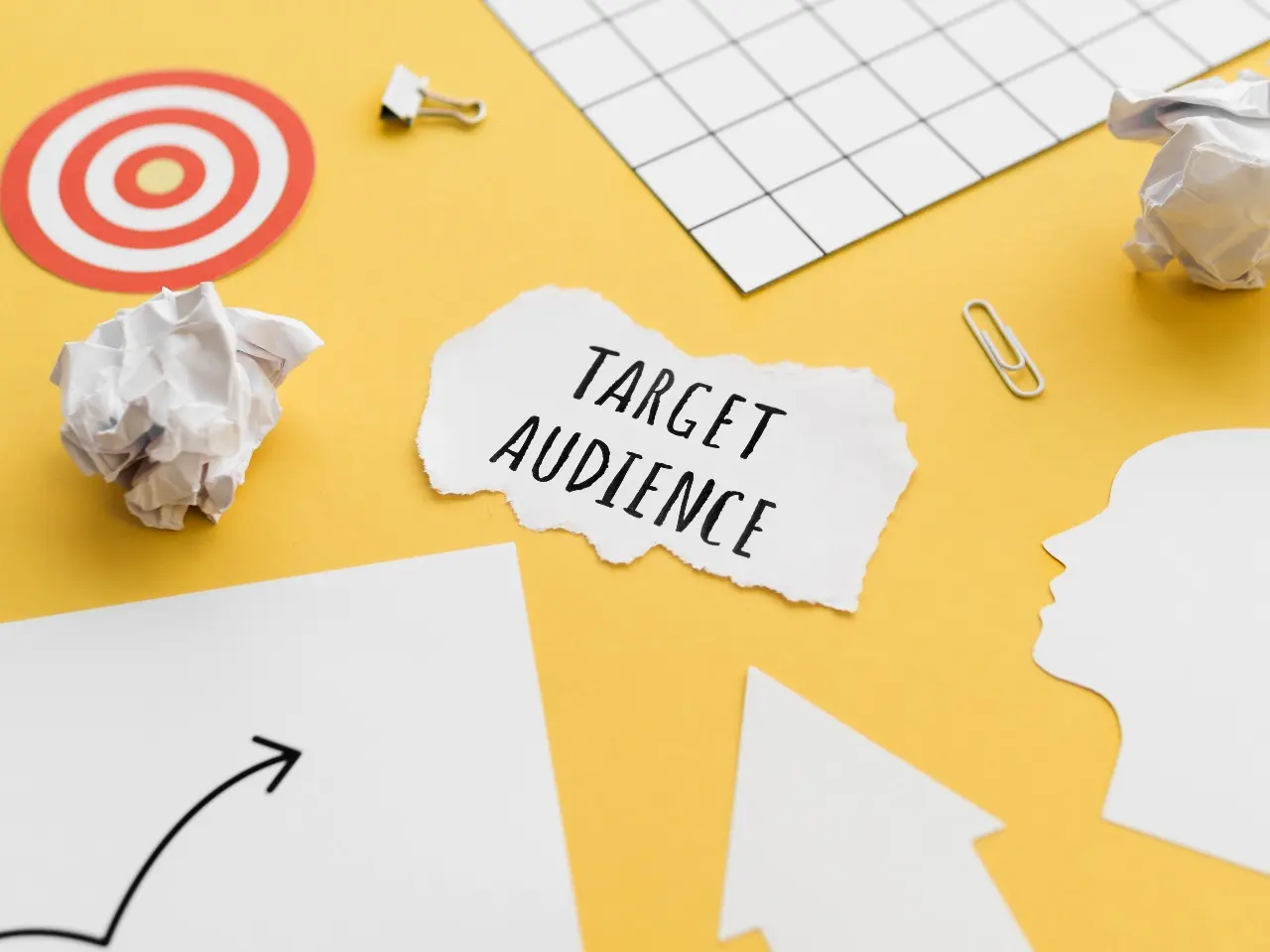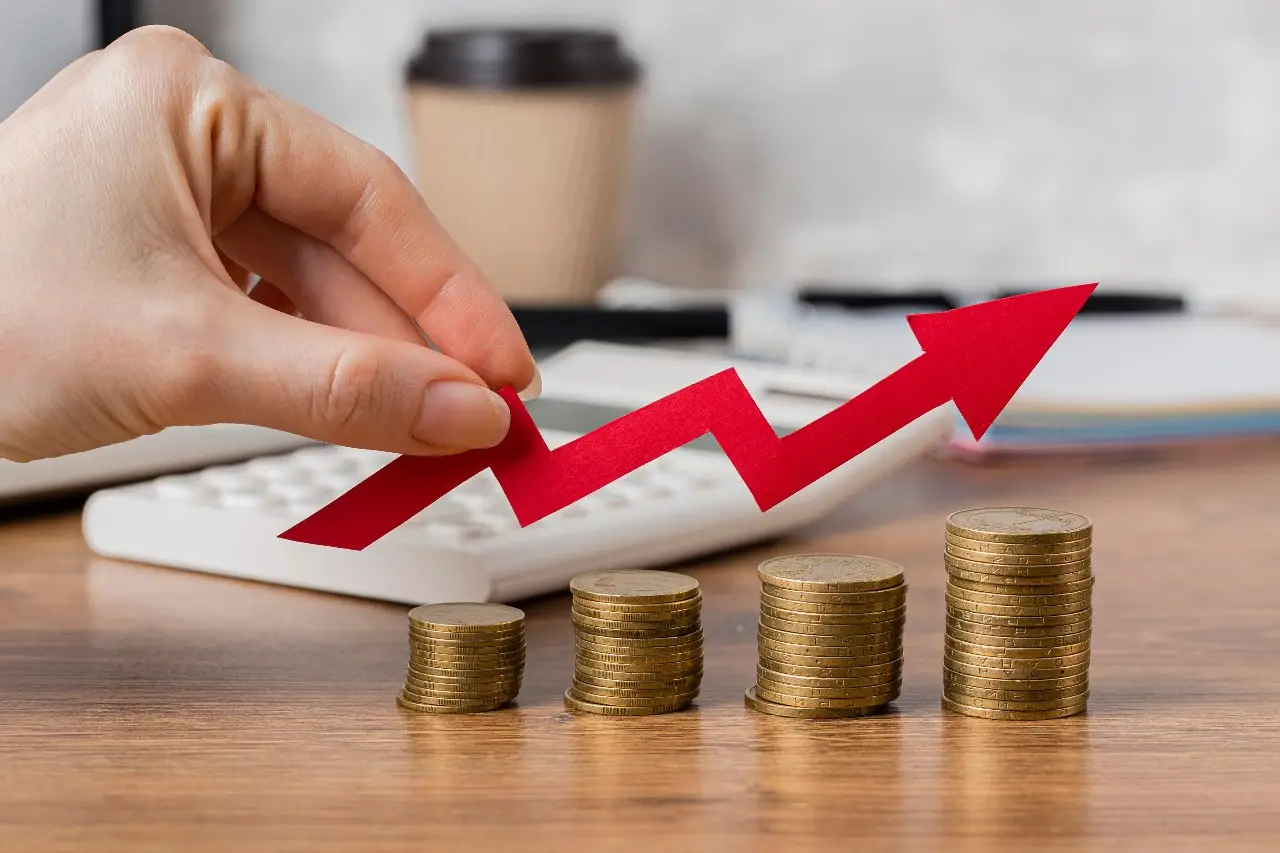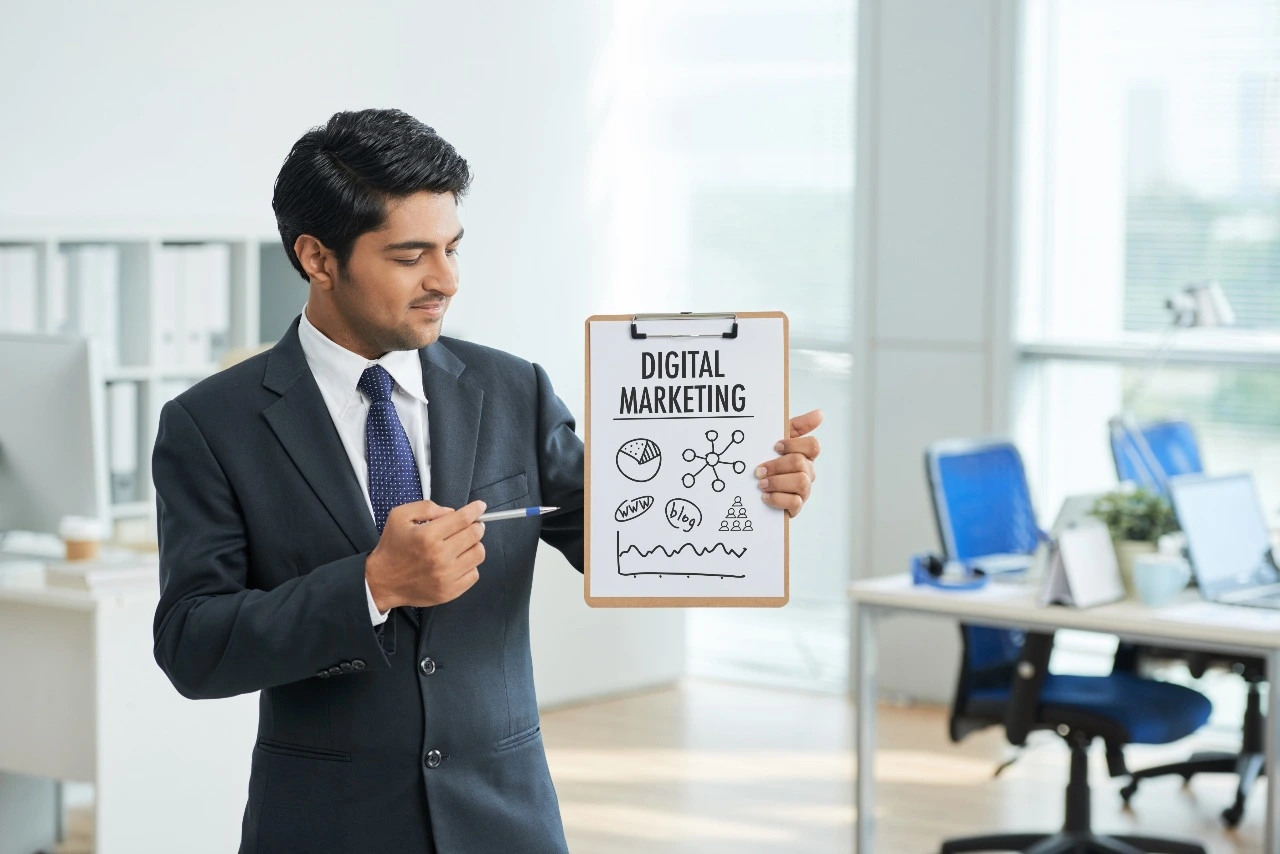Listen to article
In the complex world of marketing, it’s not enough to simply launch campaigns and hope for the best. Understanding which marketing channels deliver the most efficient ROI is crucial when measuring the success of your marketing efforts and strategically allocating your budget.
Yet, with so many options available—from AI-powered advertising to social media engagement and email campaigns—how do you determine where to invest your resources for the greatest return? Should you focus on SEO, PPC, social media, or maybe a combination of everything?
In this article, we will delve into the data-backed insights of ROI by marketing channel to provide you with a clear roadmap for maximizing your marketing investments.
How AI Supercharges Marketing Efficiency
In an era where precision and personalization are key drivers of success, AI is transforming how marketers approach their strategies. From automating repetitive tasks to unlocking data-driven insights, AI empowers marketers to allocate resources effectively while delivering hyper-relevant experiences to their audiences. The adoption of AI isn’t just an upgrade; it’s becoming a necessity for businesses aiming to stay competitive and maximize ROI.
- Marketers who integrate AI into their strategies report an average 70% increase in ROI, proving its ability to elevate marketing performance. Source
- Google Ads leverages AI to refine ad bids and craft tailored advertisements, ensuring brands connect with high-intent audiences. Source
- By utilizing first-party data through Google’s enhanced conversions feature, businesses can refine bidding strategies and use audience signals in Performance Max campaigns to achieve better results. Source, Source, Source
Key Takeaway
AI is no longer a “nice to have” but an essential resource for driving measurable results in marketing. Its ability to enhance ad efficiency, improve audience targeting, and optimize campaign outcomes makes it a critical tool for achieving higher returns. Businesses that leverage AI effectively position themselves to not only reduce waste in their marketing spend but also foster stronger customer connections.
Pro Tip:
To make the most of AI, start by aligning its capabilities with your specific business goals. Whether it’s predictive analytics for customer behavior or automating ad bidding, focus on tools that directly address your biggest marketing challenges. Then, continually evaluate performance metrics to refine and expand your AI investments.
Cracking the Code of ROI Analysis for Smarter Campaign Management
Tracking ROI is more than just a box to check—it’s the backbone of making smarter investment decisions and gaining executive buy-in for future marketing initiatives. Yet, despite its critical importance, many marketers remain behind the curve on proper ROI analysis, leaving untapped opportunities and wasted spend on the table. With the right tools and strategies, ROI tracking can serve as a compass to guide resource allocation and amplify campaign effectiveness.
- A staggering 47% of marketers admit they are not actively tracking ROI from their content marketing efforts. Source, Source
- Marketers who tap into data analytics report a 26% improvement in ROI, underscoring the transformative impact of embracing a data-driven approach. Source, Source
- Alarmingly, 72% of companies fail to review their ad campaigns for over a month, risking outdated strategies and unnecessary spend. Source
Key Takeaway
It’s evident that neglecting ROI tracking undermines a marketer’s ability to adapt to performance trends and make informed decisions. By weaving regular campaign analysis into your workflow and leveraging insightful data tools, you can identify what’s working, eliminate waste, and achieve measurable gains.
Pro Tip:
Don’t wait until the quarterly review to evaluate your campaigns. Adopt a proactive tracking system using platforms like Google Analytics, HubSpot, or SEMrush to measure performance weekly. Factor in both holistic metrics and granular data, such as cost per acquisition (CPA) and customer lifetime value (CLV), for a comprehensive view of ROI success.
Why Prioritizing SEO Unlocks Unmatched ROI in B2B Marketing
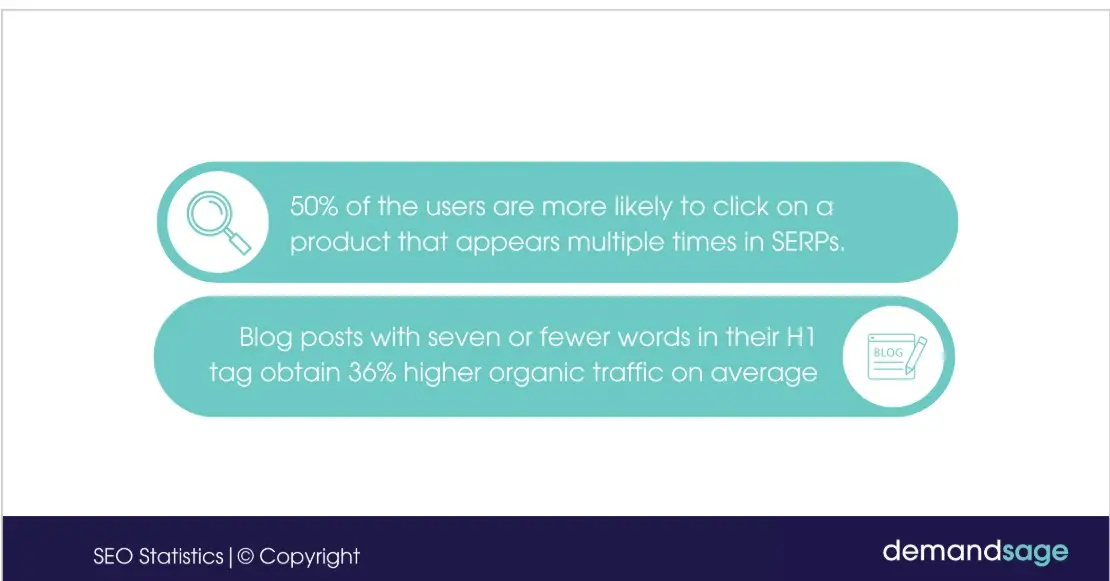
Source: DemandSage
In the competitive B2B landscape, where every dollar must deliver measurable results, SEO has solidified its place as a foundational strategy for driving sustainable growth. Unlike paid channels that often lose momentum once spending stops, SEO offers long-term benefits by capturing active prospects—those searching for solutions your business provides. The key to leveraging this channel lies in data-driven strategies, high-quality content, and consistent efforts to maintain visibility in an ever-changing digital environment.
Here’s how SEO continues to dominate as a leading driver of ROI in B2B marketing:
- B2B companies generate 2x more revenue from organic search compared to other marketing channels. Source
- 70% of B2B marketers confirm that SEO generates more sales than pay-per-click (PPC) advertising. Source
- 23% of B2B professionals name organic search as the most effective revenue driver. Source
- Nearly half of B2B companies (49%) prioritize SEO in their marketing strategies, more than organic social (43%), paid social (35%), or video (21%). Source
- 72% of marketers agree that creating high-quality content is the best way to boost organic visibility. Source
- 55% of content marketers state that frequent content publishing positively impacts search engine rankings. Source
- A staggering 96% of B2B marketers categorize SEO as either “very effective” or “somewhat effective” for achieving their objectives. Source
- SEO and websites, alongside virtual events, rank as the top-performing lead generation channels, each cited by 45% of B2B marketers. Source
- 66% of B2B buyers use internet searches during the research phase, compared to 35% relying on online ads and 23% on social media, making organic search the most influential touchpoint for purchase decisions. Source
Beyond these benefits, budget allocation data further highlights SEO’s importance:
- 15% of B2B marketing budgets are devoted to SEO, greater than investments in AI chatbots (12%) and video marketing (9%). Source
- B2B companies allocate 9.7% of their total budgets to marketing, with 17% dedicated to content creation and 16% to tools and technology. Source
- 68% of B2B marketing leaders have increased their budgets compared to last year, showing a renewed focus on achieving growth through channels like SEO. Source
- 40% of marketers plan to increase their investment in key digital channels, including paid search, email marketing, and social media, but few channels compare to the sustained ROI offered by organic search. Source
Key Takeaway
The numbers speak for themselves—SEO isn’t just another marketing tool; it’s the backbone of any serious B2B strategy. Its ability to attract intent-driven prospects, provide compounding returns over time, and directly align with how buyers discover solutions makes it indispensable. However, as search algorithms grow more sophisticated, rankings require more than keywords; they demand strategic, high-quality content that delivers true value to users.
Pro Tip:
To maximize digital marketing ROI from SEO, blend creativity with analytics. Use tools like SEMrush or Ahrefs to uncover trending keywords, then pair that data with well-crafted, audience-focused content that answers specific buyer pain points. Don’t forget to optimize technical SEO elements like page speed, mobile responsiveness, and structured data to ensure a seamless user experience—Google rewards it, and so will your bottom line.
How SEO Turns Visibility into Profit Across Industries
In a world where online discovery often begins on search engines, the power of SEO lies in its ability to connect businesses with high-intent audiences. Unlike paid ads that disappear once the budget dries up, SEO delivers sustained visibility and traffic for months, even years, making it a cornerstone of cost-effective digital strategies. Beyond just visibility, SEO is a profit generator, showing unparalleled ROI across diverse industries. Whether you’re running an e-commerce store or a SaaS business, the numbers prove that strategic SEO investments often pay off exponentially.
- Securing the #1 spot in Google search results brings unmatched benefits, with a 27.6% click-through rate (CTR)—a whopping 50% higher than the second position. Source
- Search engines remain a dominant force, with 93% of all online experiences starting with a search. Source
- Google continues to lead the search engine market, holding nearly 80% of global market share. Source
Key Takeaway
The real value of SEO lies in its compounding benefits. Each well-optimized blog post, keyword-rich landing page, or high-authority backlink builds a stronger foundation for organic traffic that doesn’t just drive clicks but converts into sales and leads. Industries with long sales cycles like B2B SaaS or e-commerce have particularly leveraged SEO’s ability to nurture and convert audiences over time, reducing dependency on paid traffic channels.
Pro Tip:
To maximize SEO ROI, don’t just target broad, high-volume keywords. Instead, prioritize long-tail keywords that directly match customer intent. Complement this by consistently publishing content that addresses specific pain points, and ensure technical SEO practices like page speed optimization and mobile-friendliness are in place. For measurable growth, integrate tools like Google Analytics or SEMrush to monitor results and refine your strategy.
PPC and SEM for ROI-Driven Campaigns
When it comes to channels that provide measurable, scalable, and immediate results, pay-per-click (PPC) and search engine marketing (SEM) consistently rank at the top. These platforms are not just about attracting clicks—they’re about driving qualified traffic and achieving tangible business outcomes. By leveraging data-driven insights and precise audience targeting, businesses can create campaigns that deliver both short-term wins and long-term growth. Let’s explore some compelling statistics that highlight the power of PPC and SEM in achieving impressive ROI results.
- Businesses see an average revenue of $3 for every $1.60 spent on Google Ads (formerly AdWords). Source
- B2B marketers reported that SEM/PPC was the paid channel that produced the best results for their content marketing efforts (61%). Source
- PPC advertising generates twice the number of visitors compared to SEO efforts, making it a valuable tool for driving immediate traffic to your website. Source
- A significant 65% of high-intent searches result in an ad click, showcasing the potential of PPC for lead generation. Source
- A substantial 62% of marketing teams increased their PPC budgets in the past year, indicating a growing confidence in the channel’s ability to deliver results. Source
Key Takeaway
PPC and SEM remain cornerstones of any successful digital marketing strategy, especially for businesses aiming to capture high-intent audiences and secure measurable ROI. Beyond their impressive financial benefits, these channels empower marketers with flexibility—allowing for real-time adjustment of campaigns based on performance metrics. In a competitive landscape where every dollar matters, PPC and SEM provide the control and precision modern marketers crave.
Pro Tip:
Don’t set your campaigns on autopilot. Conduct A/B testing on ad creatives, experiment with different bidding strategies, and regularly update keyword lists to align with shifting consumer behaviors and industry trends. Smart optimization can turn good results into great ones—and keep your ROI climbing.
PPC Advertising for Stronger ROI
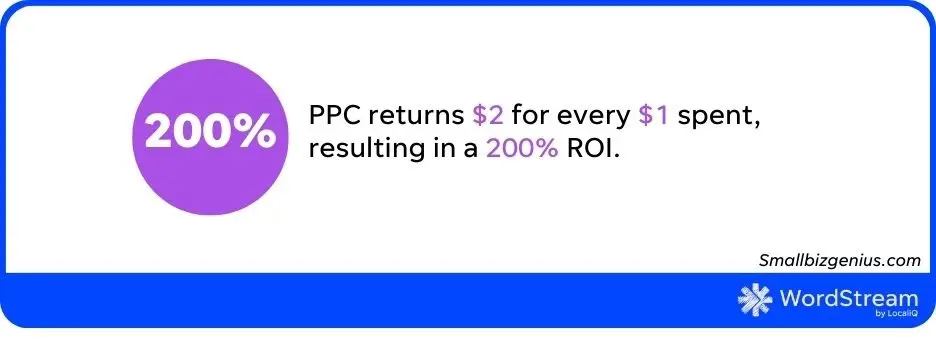
Source: WordStream
Pay-per-click (PPC) advertising has become a defining pillar of modern marketing strategies, offering businesses a highly targeted path to capture consumer attention and drive meaningful interactions. However, as competition intensifies and mobile usage dominates, succeeding in PPC requires more than simply setting a budget and launching ads. Businesses must focus on precision, leveraging data-driven insights to optimize campaigns for audience relevance, platform performance, and device adaptability. With Google remaining the leader in PPC ecosystems, thoughtful execution can turn clicks into conversions and truly maximize ROI.
- Google’s PPC ads account for 64.6% of all clicks, demonstrating its significant role in driving paid search traffic. Source
- Mobile users drive 52% of all PPC ad clicks, solidifying the mobile-first approach for search advertisers. Source
- By 2029, mobile is expected to dominate search ad spending, making up 61% of the market. Source
- Ad spending on mobile devices in search advertising is projected to reach $251.1 billion by 2028. Source
- Google captures 95% of all paid search ad clicks on mobile, underscoring its dominance in this space. Source
- Location-specific digital ad campaigns are 20 times more effective than traditional banners without location targeting. Source
- Custom PPC landing pages can increase effectiveness by approximately 5%, enhancing conversions. Source
- Ads featured on Google’s first search results page achieve an average CTR of 3.16%. Source
- The top three ad positions on Google desktop searches grab 95% of all clicks, showing the necessity of prime positioning. Source
- A remarkable 65% of people click on ads while shopping online, emphasizing the impact of well-targeted ads. Source
Key Takeaway
The effectiveness of PPC campaigns lies in going beyond the surface—every detail, from mobile responsiveness to ad placement, contributes to the final ROI. With mobile continuing to shape the future of paid advertising, brands must adjust to consumer habits, such as prioritizing mobile-friendly PPC formats, location-specific targeting, and optimizing landing pages for seamless user experiences. Moreover, securing top ad positions isn’t merely about visibility; it’s about relevancy and capturing high-intent clicks to convert searchers into buyers.
Pro Tip:
To enhance ROI, use advanced audience segmentation and geo-targeting to tailor your ads to the right customers. Leverage tools like Google’s responsive search ads and dynamic keyword insertion to improve relevance at scale. Lastly, don’t overlook A/B testing for ad copy and landing pages—it’s one of the most powerful ways to refine performance and outpace competitors in this hyper-competitive channel.
Maximizing ROI with Social Media and Digital Display Advertising
In a crowded digital landscape, social media and digital display ads have become indispensable tools not just for visibility but for driving measurable ROI. These channels offer the distinct advantage of hyper-targeting specific audiences while fostering real-time engagement. When used strategically, they can amplify not just awareness but also conversions, making them essential for both B2B and B2C marketers. The power of these platforms lies in their ability to combine creative storytelling with data-driven precision, making them ideal for brands looking to stand out in competitive markets.
- Facebook and Google ads are paid ad channels with the highest ROI. Source
- Social media advertising and promoted posts were cited by 49% of B2B marketers as producing the best results for their content marketing, closely following SEM/PPC. Source
- 35% of B2B marketers found digital display advertising to be effective for their content marketing efforts. Source
- Approximately one in four consumers report making a purchase after viewing a story on Instagram. Source
- LinkedIn users demonstrate a strong preference for video content, being 20 times more likely to share a video compared to other types of posts. Source
Key Takeaway
The key takeaway here is clear: social media and digital display ads aren’t just about increasing exposure—they can be ROI powerhouses when aligned with an intentional strategy. From Instagram Stories driving direct consumer purchases to LinkedIn videos dominating B2B engagement, these formats give marketers an unparalleled ability to create connections that translate directly into revenue. The emphasis on video content is particularly striking, highlighting that audiences crave dynamic, interactive visuals that go beyond static messaging.
For businesses, especially small ones, navigating these platforms effectively can be challenging without a clear plan. Implementing digital marketing strategies for small businesses can help ensure that every dollar invested is maximized for impact.
Pro Tip:
To get the most from your campaigns, focus on platform-specific optimization. For instance, leverage Instagram Stories to showcase time-sensitive offers, craft LinkedIn videos tailored to professional audiences, and explore Twitter’s video-first approach to drive more cost-efficient engagement. Don’t just aim for visibility—create experiences that resonate, engage, and convert.
Email Marketing with Smart Strategies
Email marketing continues to be one of the most effective channels for driving revenue and nurturing customer relationships. Its unique combination of high ROI, broad consumer reach, and measurable outcomes make it indispensable for modern marketers. However, with rising deliverability challenges and evolving consumer expectations, the future of email marketing lies in the strategic use of personalization and automation. When leveraged effectively, these tools can turn a good email strategy into a remarkable one.
- Email marketing is projected to generate $9.5 billion in revenue in 2024, rising to $18.9 billion by 2028. Source
- Consumers spend 128% more on purchases made through email compared to other channels. Source
- The average click-through rate for emails in 2024 is 2.62%. Source
- Email marketing delivers an astounding average ROI of 4200%. Source
- A solid 60% of consumers prefer brands to contact them via email. Source
- Automated emails generate 20% more leads than non-automated campaigns. Source
- In 2023, 86% of emails reached inboxes, but 7% were lost, and another 7% went to spam. Source
- 65% of marketers face growing challenges with email deliverability. Source
- Of email marketers, 52% plan to prioritize personalization in their campaigns, while 48% aim to enhance automation. Source
- Looking forward, 35% of marketers aim to increase their use of automated emails. Source
Key Takeaway
The numbers tell a compelling story: email marketing is a revenue-driving giant, but competition for inbox visibility is fiercer than ever. To stay ahead, brands must embrace personalization and automation to craft experiences that resonate with their audiences on an individual level. Personalized campaigns not only strengthen customer loyalty but also amplify engagement, while automation streamlines workflows, freeing up marketers to focus on strategy.
Pro Tip:
Test different timing and segmentation strategies to maximize email impact. Analyze open rates, clicks, and conversions to fine-tune your approach, ensuring your campaigns are always aligned with consumer behavior and preferences. Building trust through consistency and relevance will ensure your emails aren’t just delivered—but eagerly opened.
Marketing Automation: Balancing Potential with Optimization
Marketing automation has become a prominent trend in digital marketing, offering the potential to streamline processes and improve efficiency. However, realizing its full potential requires careful planning and optimization.
- Marketing automation has been identified as one of the most significant digital marketing trends in recent years. Source
- Despite its potential, a substantial 41% of B2B businesses report that they are not fully leveraging their company’s marketing automation capabilities. Source
- A relatively small percentage of marketers, only 20.65%, report having a successful marketing automation strategy. Source
Key Takeaway
These statistics reveal a gap between the promise of marketing automation and the reality of its implementation. While marketing automation offers significant benefits, businesses must invest in proper planning, training, and optimization to achieve a successful strategy.
Pro Tip:
Start with a clear understanding of your marketing goals and customer journey, and then choose automation tools that align with your specific needs.
Small Businesses are Doubling Down on Digital Marketing Growth
Digital marketing is no longer a luxury for small businesses—it’s the backbone of their growth strategy as they compete in an increasingly competitive marketplace. With more tools and platforms available than ever, small businesses are seizing the opportunity to expand their reach and connect with their target audiences online.
- A striking 94% of small businesses plan to increase their digital marketing budgets in 2024. Source
Key Takeaway
This statistic shows that small businesses are not just dipping their toes into digital marketing—they’re diving in headfirst. But with increased investment comes increased responsibility to make every dollar count. Exploring tactics like personalized advertising, search engine optimization (SEO), and omnichannel strategies can help small businesses maximize ROI and compete effectively with larger organizations.
For businesses that want to streamline their marketing efforts and focus on the channels that deliver the best results, leveraging full-service marketing solutions can be a game-changer. These services provide a comprehensive approach to digital marketing, ensuring every aspect of a campaign is optimized for maximum efficiency and ROI.
Pro Tip:
Before ramping up your budget, assess which digital marketing channels already drive the most engagement and conversions for your business. Whether through Google Ads, social media, or email, focusing on the most impactful avenues ensures your resources are used efficiently and strategically.
Conclusion
The data speaks volumes: understanding and optimizing ROI by marketing channel can transform your marketing efforts into a revenue-generating machine. From the precision of PPC campaigns to the organic power of SEO, and the customer-centric focus of email marketing, each channel plays a unique role in driving impactful results. Businesses that embrace data-driven strategies, implement cutting-edge tools like AI, and continually adapt to emerging trends are better positioned to outpace competitors and maximize their marketing investments.
Whether you’re a B2B company capitalizing on SEO’s unparalleled lead generation potential or a small business refining PPC strategies for targeted audience reach, the formula for success lies in balancing innovation with analysis. Regularly tracking performance, crafting personalized experiences, and aligning budget allocation with high-ROI channels will keep your marketing on the path to efficiency and growth.
Ready to boost your traffic and grow your website? Your customers are looking for you, and our SEO services can help you be found across search engines. Let’s turn your marketing potential into measurable success!
About Which Marketing Channels Drive the Most Efficient ROI?
This guide was written by the Scopic Studios team and reviewed by Araksya Hakobjanyan, SEO Lead at Scopic Studios.
Scopic Studios delivers exceptional and engaging content rooted in our expertise across marketing and creative services. Our team of talented writers and digital experts excel in transforming intricate concepts into captivating narratives tailored for diverse industries. We’re passionate about crafting content that not only resonates but also drives value across all digital platforms.
Note: This blog’s feature image is sourced from Freepik.



